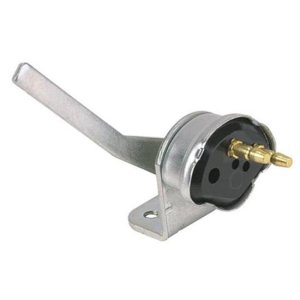oldtymehiboy
Member
Hello to one and all. Bought a T- Bucket built in 1960 in California. Looks a lot like TV Tommy Ivo's T Bucket. Got it home had some what of brakes. Not real good but Ok. It has a 51 Olds rear end with Drum Brakes. Fronts are a mixer of parts. Buick finned drums, Buick Hubs, and 58 Chrysler backing plates with two wheel cylinders. One on top one on bottom. Never had seen this before. Evidently it had brakes and worked fine before when it was in Califorina. When I got car home from Calif. I changed wheels and tires front and rear. Changed the front lug bolts to lug studs in the Buick hubs. I had the finned drums off several times. Got everything buttoned back up. Looks super - but no brakes. Especially when backing. Not the first sign of a brake when backing. The master cylinder turns out to be a 55 - 59 Chevy 1" bore with one bowl and one brake line port and a port for stop lite switch. We knew we had air in the system. We bled the master cylinder and back bled the whole system. No luck - still no brakes. Master cylinder is mounted inside the frame rail next to steering box. It appears that the master cylinder is lower than the two rear wheel cylinders and about the same height as the two fronts. I realize that there have been thousands of T- Buckets built with the master cylinder in this location. Next to the steering box on the frame rail. And I am in no way shape or form going to mount it on the firewall. The original master cylinder TE21000 has two ports. One or brake line and the other for stop lite switch. I just bought a new replacement. A Dorman M21000. It looks the same mounts the same but has two brake line ports but no provision for the stop lite switch. What I could do here is mount the brake line switch in the brake line system. I feel that would work. I called a friend of mine in Ohio who has a big Hot Rod Shop and he uses a New billet dual reservoir master cylinder on all his builds. I'm not sure if I would have the room for a much bigger master cylinder. So my question to You fellows should I go with the new billet master cylinder or stay with the cash iron M21000 and keep it as period as possibe. That's my choice however I need to figure out how to get the air out of the system. I'm not going to let this No brake problem buffalo me. But I would appreciate any and all advice from You fellows. Thxs. Bernie





